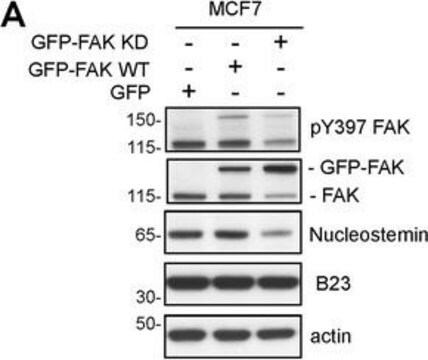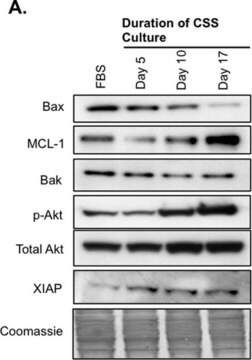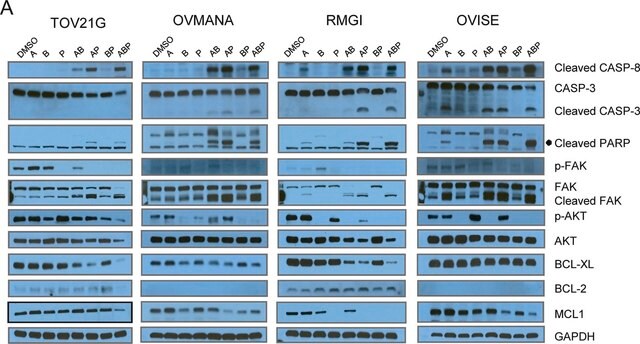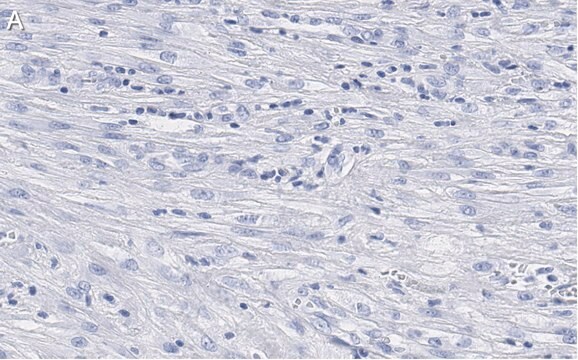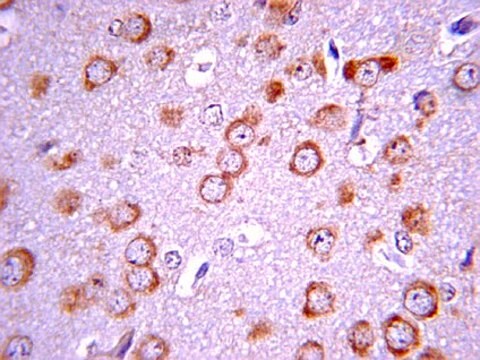05-1140
Anti-phospho-Focal Adhesion Kinase (Tyr397) Antibody, clone 18
clone 18, from mouse
Synonym(s):
FADK 1, PTK2 protein tyrosine kinase 2, Protein-tyrosine kinase 2, focal adhesion kinase 1
About This Item
Recommended Products
biological source
mouse
Quality Level
antibody form
purified immunoglobulin
antibody product type
primary antibodies
clone
18, monoclonal
species reactivity
mouse, human
technique(s)
western blot: suitable
isotype
IgG1
UniProt accession no.
shipped in
wet ice
target post-translational modification
phosphorylation (pTyr397)
Gene Information
human ... PTK2(5747)
mouse ... Ptk2(14083)
General description
Specificity
Immunogen
Application
Cell Structure
Cytoskeletal Signaling
Quality
Western Blot Analysis: 1:500 dilution of this lot detected phospho-FAK (Tyr397) on 10 ug of LPS treated RAW 264 lysates.
Target description
Linkage
Physical form
Storage and Stability
Note: Variability in freezer temperatures below -20°C may cause glycerol containing solutions to become frozen during storage.
Analysis Note
LPS treated RAW 264 lysates.
Other Notes
Disclaimer
Not finding the right product?
Try our Product Selector Tool.
Storage Class Code
10 - Combustible liquids
WGK
WGK 2
Flash Point(F)
Not applicable
Flash Point(C)
Not applicable
Certificates of Analysis (COA)
Search for Certificates of Analysis (COA) by entering the products Lot/Batch Number. Lot and Batch Numbers can be found on a product’s label following the words ‘Lot’ or ‘Batch’.
Already Own This Product?
Find documentation for the products that you have recently purchased in the Document Library.
Our team of scientists has experience in all areas of research including Life Science, Material Science, Chemical Synthesis, Chromatography, Analytical and many others.
Contact Technical Service

